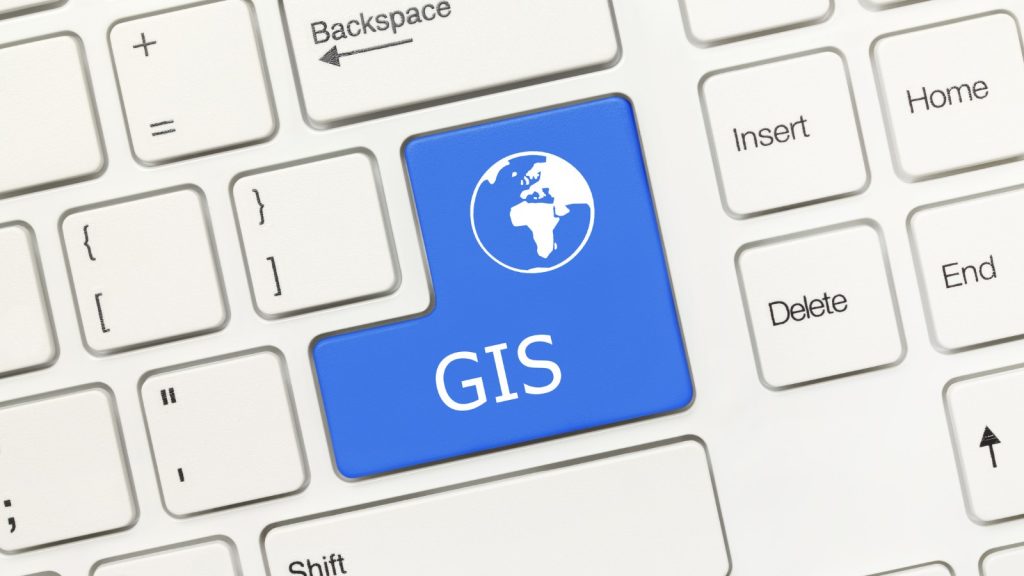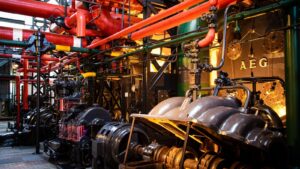Australia has been home to an outstanding network of roadways and highways for a long time. Their remarkable transportation journey starts with powerful planning, careful budgeting, smooth functioning, and timely maintenance. Once you build a new road, this journey is a ‘never-ending’ one for sure. Moving beyond the road and highway construction projects, there comes the necessity for minor roadway projects such as creating new ramps, traffic lanes, traffic signals and signs, etc. It is true that you need to have a skilled workforce to fulfil these requirements, but technology is the key player in this scenario. Geographic Information System, or GIS, technology enters the spotlight as one of the potent capabilities to revolutionise minor roadway projects through its cutting-edge powers.
This article will explore everything about GIS technology and key ways to employ it for minor roadway projects in Australia.
This article will explore everything about GIS technology and key ways to employ it for minor roadway projects in Australia.
Exploring GIS Technology

- Before digging deep, we should understand the true meaning of this technology. This is an effective tool for gathering, storing, analysing, and presenting geographical or statistical information. In order to see and understand patterns, connections, and trends related to particular places, it integrates maps, data, and software.
- Now let us explain how this technology functions. GIS helps users learn about and extract meaning from complicated geographical data by integrating many layers of information, including geography, demographics, infrastructure, and natural resources. Users can use it to make well-informed choices in a variety of areas, such as infrastructure development, environmental management, urban planning, and disaster response. It also allows users to build interactive maps, conduct spatial analysis, and model scenarios.
- In the realm of rapid development, GIS technology plays the role of the master, becoming the best platform for consolidating and analysing location-based data to solve problems, plan effectively, and enhance decision-making processes.
- When it comes to Australia, GIS is mostly utilised in road development projects for aiding in site selection, analysing terrain, and optimising route planning. It makes environmental impact assessments, traffic analysis, and asset management much easier. GIS makes it possible to effectively allocate resources, estimate expenses, and visualise suggested modifications.
- Its sophisticated integration ensures efficient infrastructure development in roadway projects and expedites decision-making, which improves overall project efficiency. Ultimately, this development will offer an economic advantage for Australia.
Top Ways to Employ GIS for Minor Roadway Projects

Site Selection and Analysis
Though this is completely different from the major roadway development projects, minor projects also need to have higher levels of accuracy and precision throughout the overall operations. Not only do the bridges or major road development operations need suitable site selection ability, but the minor projects also do. This is where you need to rely on new technology, such as GIS. What exactly can it do for you? GIS technology significantly aids minor roadway projects through its robust site selection and analysis capabilities.
Imagine when a municipal council needs to implement a bike lane addition. How can you do this without knowing the best site to build it? Through the integration of geographical data layers that include topographical features, land use trends, environmental aspects, and specifics about the infrastructure that is currently in place, GIS allows a thorough assessment of possible project locations. To find the best places for small road improvements, junctions, or extensions, planners can overlay and evaluate these datasets.
The technology’s spatial analytic capabilities offer accurate evaluation by taking into account variables including traffic flow, soil composition, elevation, and proximity to water bodies. This thorough examination facilitates well-informed decision-making, ensuring that the locations were chosen to match project goals, maximise resource utilisation, reduce environmental effects, and blend in with the current major road system.
This is how GIS empowers planners to identify and choose the best sites, which makes sure that the execution of minor roadway projects is completely on point.
Imagine when a municipal council needs to implement a bike lane addition. How can you do this without knowing the best site to build it? Through the integration of geographical data layers that include topographical features, land use trends, environmental aspects, and specifics about the infrastructure that is currently in place, GIS allows a thorough assessment of possible project locations. To find the best places for small road improvements, junctions, or extensions, planners can overlay and evaluate these datasets.
The technology’s spatial analytic capabilities offer accurate evaluation by taking into account variables including traffic flow, soil composition, elevation, and proximity to water bodies. This thorough examination facilitates well-informed decision-making, ensuring that the locations were chosen to match project goals, maximise resource utilisation, reduce environmental effects, and blend in with the current major road system.
This is how GIS empowers planners to identify and choose the best sites, which makes sure that the execution of minor roadway projects is completely on point.
Environmental Impact Assessment
Through its capabilities, GIS facilitates a comprehensive analysis of sensitive areas, habitats, and natural resources affected by such projects. You already know that the latter can overlay environmental data onto spatial maps. With this ability in hand, planners can look into potential impacts in real time, which helps them make informed decisions to minimise disturbances.
GIS is powerful enough to identify ecologically sensitive zones, water bodies, wildlife habitats, and areas of cultural significance that might be affected. When it comes to minor roadway projects, the authorities need to be precise on the crossing paths, especially if the road lies in the middle of a forest or has wild animal passing points. This detailed assessment empowers planners to devise mitigation strategies, alter project designs, or implement measures that reduce environmental harm.
This is another outstanding capability of this technology. Minor road projects can proactively address ecological issues, protect biodiversity, and ensure responsible infrastructure development while limiting negative environmental consequences by utilising GIS for environmental impact assessment.
GIS is powerful enough to identify ecologically sensitive zones, water bodies, wildlife habitats, and areas of cultural significance that might be affected. When it comes to minor roadway projects, the authorities need to be precise on the crossing paths, especially if the road lies in the middle of a forest or has wild animal passing points. This detailed assessment empowers planners to devise mitigation strategies, alter project designs, or implement measures that reduce environmental harm.
This is another outstanding capability of this technology. Minor road projects can proactively address ecological issues, protect biodiversity, and ensure responsible infrastructure development while limiting negative environmental consequences by utilising GIS for environmental impact assessment.
Data Visualisation and Mapping
You cannot proceed with minor roadway operations and maintenance if you do not have a proper idea about the area in which you are doing these implementations. This is why you need to have technology that can offer you the advantage of data visualisation and mapping as a bonus. GIS technology transforms the mapping and visualisation of minor road projects by combining various data sources into detailed visual models.
Municipal planners and other interested parties can use GIS to make interactive maps that show suggested modifications, alignments, and enhancements to the road network. These dynamic maps provide a framework for placing many layers of data, including land use, transportation patterns, infrastructure specifics, and environmental considerations.
GIS helps with effective stakeholder involvement, project plan communication, and well-informed decision-making by visualising such complicated data. This visualisation feature helps road planners foresee problems, optimise designs, and ensure consistency with project objectives by providing greater insights into the impact of their work.
Be it implementing traffic lights, curb extensions, or anything, the data visualisation and mapping capacity of GIS technology makes a clear road for the authorities within no time.
Municipal planners and other interested parties can use GIS to make interactive maps that show suggested modifications, alignments, and enhancements to the road network. These dynamic maps provide a framework for placing many layers of data, including land use, transportation patterns, infrastructure specifics, and environmental considerations.
GIS helps with effective stakeholder involvement, project plan communication, and well-informed decision-making by visualising such complicated data. This visualisation feature helps road planners foresee problems, optimise designs, and ensure consistency with project objectives by providing greater insights into the impact of their work.
Be it implementing traffic lights, curb extensions, or anything, the data visualisation and mapping capacity of GIS technology makes a clear road for the authorities within no time.
Traffic Analysis and Planning
How do you know the exact road point to build a guardrail installation or signage? For that, you have to make a thorough pre-analysis of the traffic on the road. This is not that complicated, as now you have GIS in place. It has become more common for Australian road development planners to utilise GIS tools to model traffic scenarios, assess the impact of proposed changes, and identify optimal routes or adjustments to enhance traffic flow.
Now let us walk you through a bit of its capacity. The detection of high-traffic regions, possible bottlenecks, and locations in need of traffic calming measures is made easier by this technology. On the other hand, GIS helps in the construction of effective minor roadway projects, the implementation of smart transportation networks, and the optimisation of traffic control techniques by visualising and analysing traffic patterns.
In minor roadway projects, planners can come to data-driven decisions, reduce traffic, increase safety, and improve overall transportation efficiency with the use of GIS-powered traffic analysis.
Now let us walk you through a bit of its capacity. The detection of high-traffic regions, possible bottlenecks, and locations in need of traffic calming measures is made easier by this technology. On the other hand, GIS helps in the construction of effective minor roadway projects, the implementation of smart transportation networks, and the optimisation of traffic control techniques by visualising and analysing traffic patterns.
In minor roadway projects, planners can come to data-driven decisions, reduce traffic, increase safety, and improve overall transportation efficiency with the use of GIS-powered traffic analysis.
Making Sure Every Inch of the Road is Safe with GIS

If the safety of the roads in Australia gives you constant headaches, we would like to suggest ‘GIS’ technology as the best solution. No matter what purpose you are implementing this modern tool for, it will always serve your expectations with 100% precision. However, our friendly reminder is for you to see a demo before purchasing any tool, as the right technological strategy will give you the best outcome in the end.







